History and future of the forest are the focus of the new “Wald:Welten” exhibition at the Silvanum Forestry Museum.
On behalf of the Styrian Eisenwurzen Nature and Geopark, we provided the concept and implementation for five interactive touchscreen stations. We also developed an AR app with additional interactive stations for smartphones and rental devices.
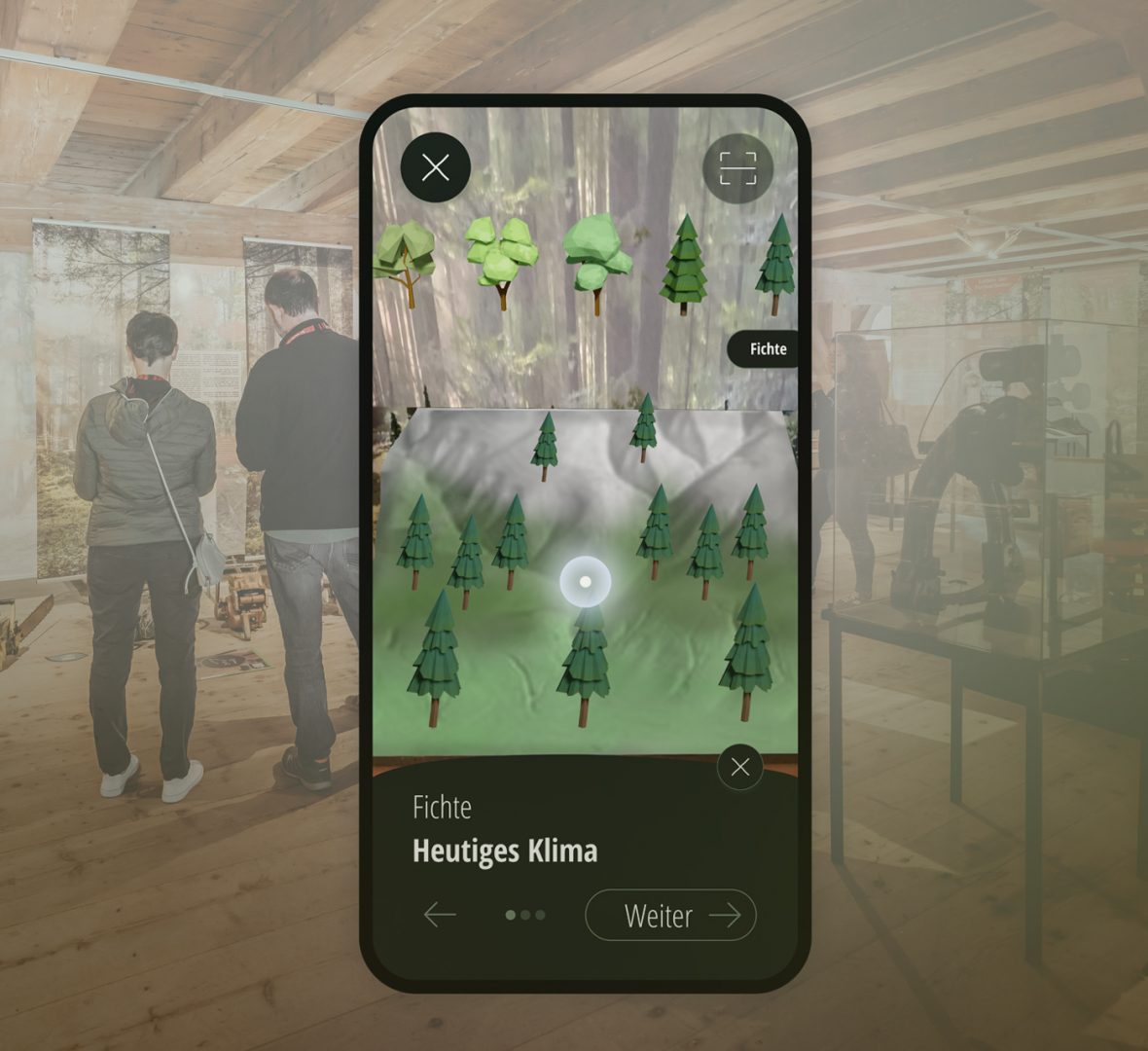
Didactic AR elements
The interactive AR experiences enhance the exhibition with impressive digital elements that deepen knowledge in a didactic way and invite visitors to participate.
Visitors can virtually cut down a tree themselves and experience the timber industry from a subjective perspective. Elsewhere, an AR layer overlays a miniature model of the region and provides in-depth information.
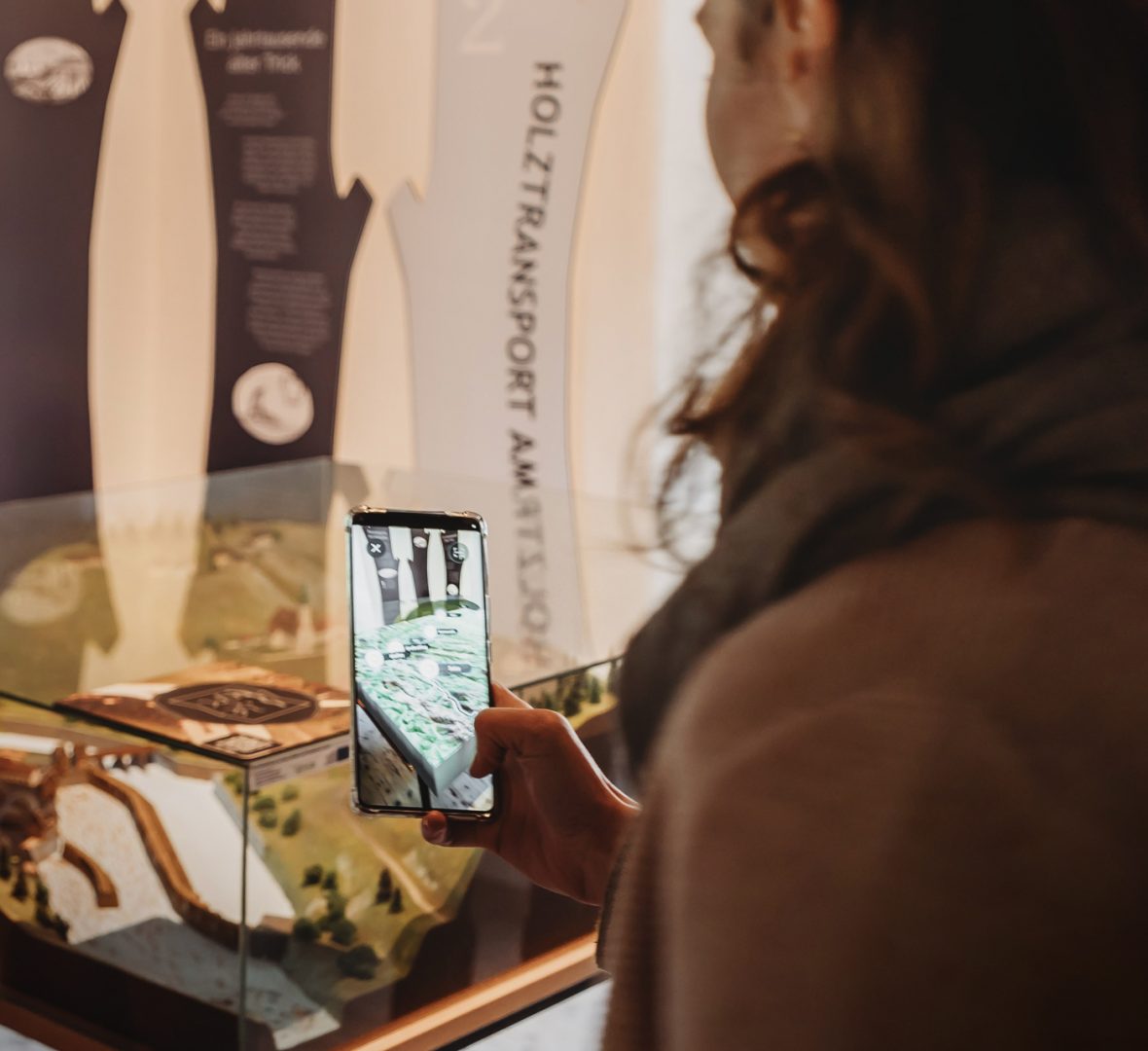

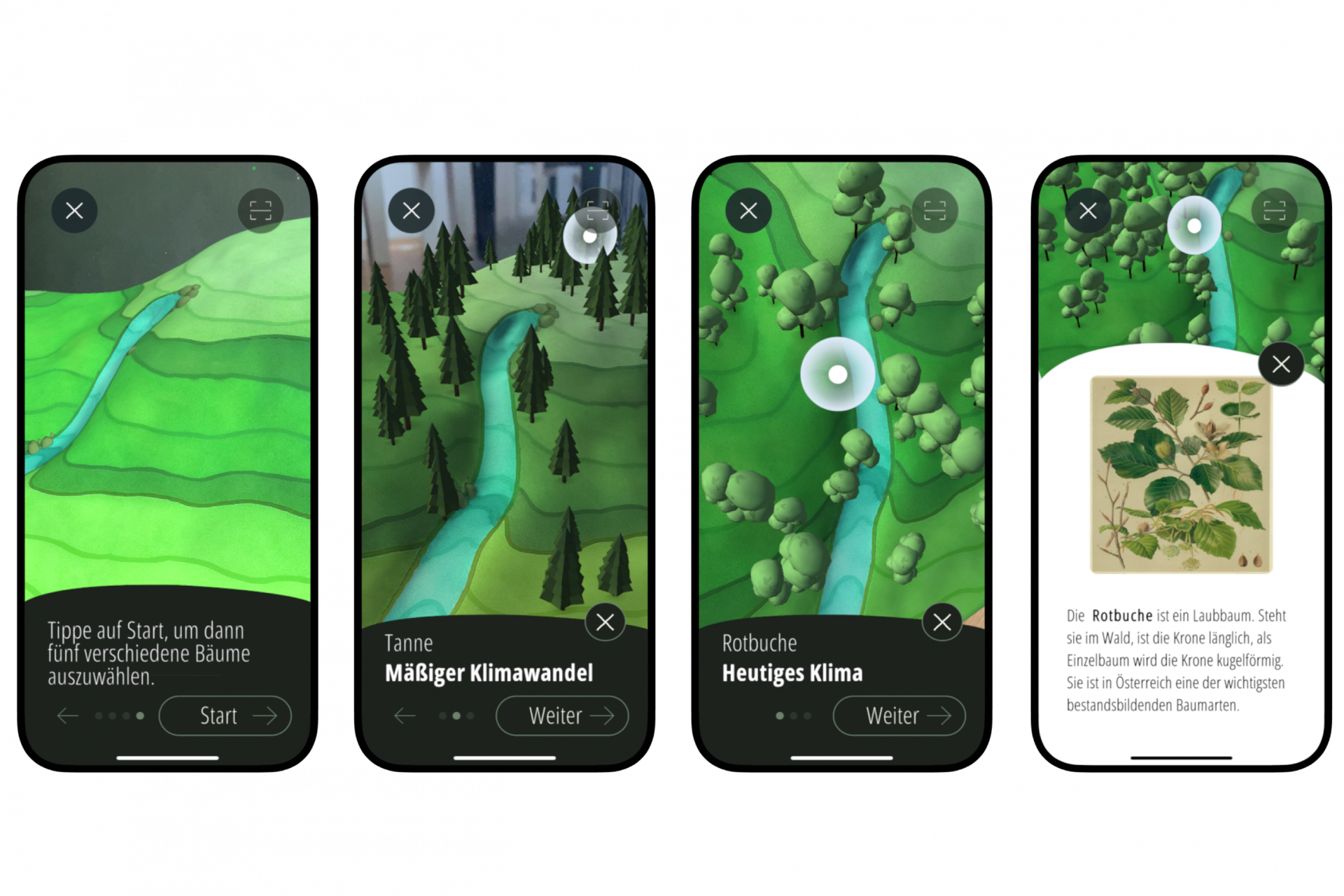
The AR stations are superbly implemented – well thought-out in terms of content, convincingly designed, and realized with great attention to detail. The fluxguide team has created an extraordinary experience that enriches our exhibition in a special way.
Martin Gebeshuber, Regional Manager, Styrian Eisenwurzen Nature and Geopark
Touchscreens for digital mediation
At several stations throughout the exhibition, visitors can use touchscreens to access in-depth information about the forest habitat. They can learn about the Steirische Eisenwurzen region and climate change, or experience how bark beetles are threatening our forests.
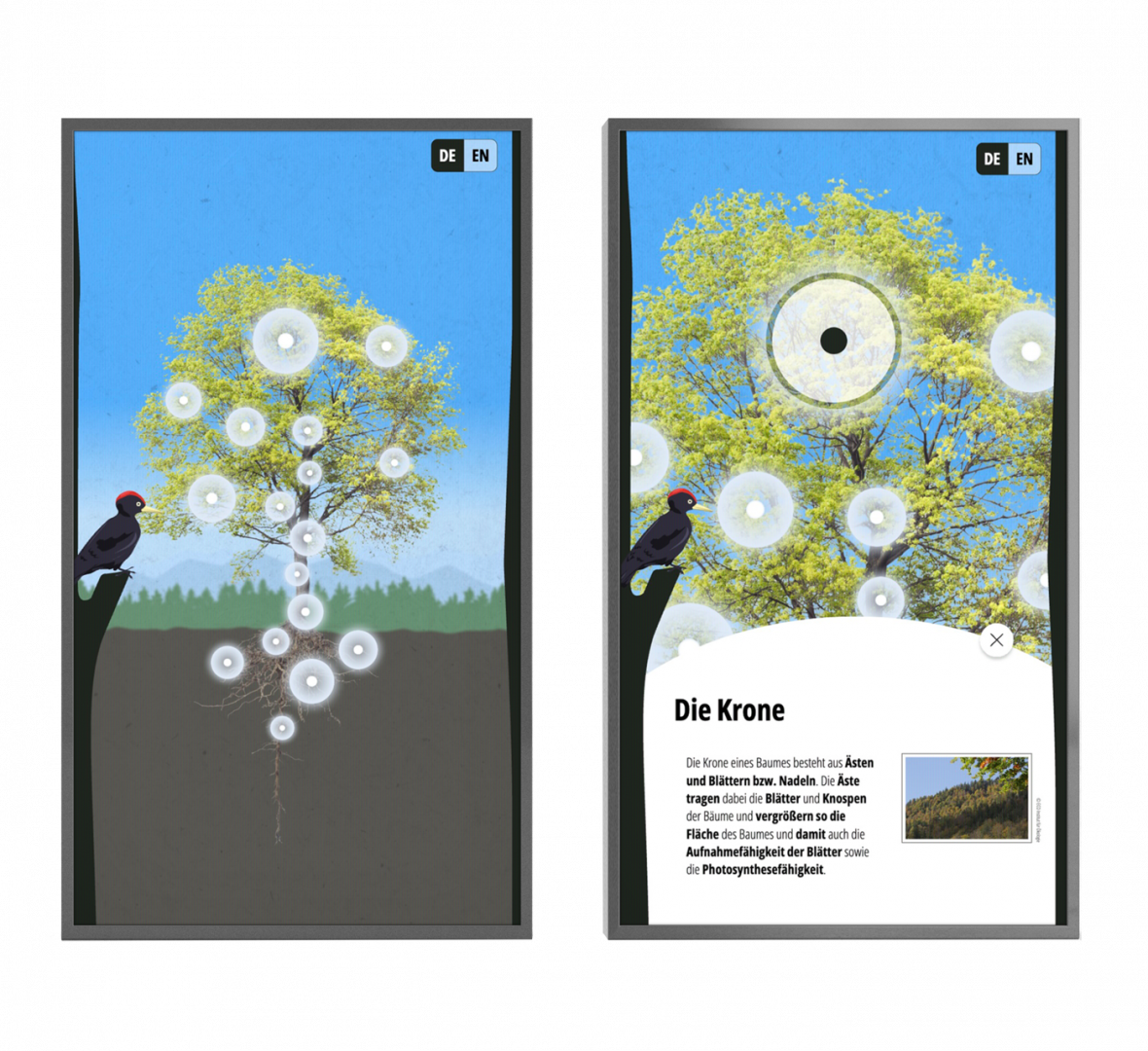
Environmental education with a difference
Want to teach about ecological relationships in an exciting and contemporary way?
Why not with the help of a forest dweller on TikTok? At a touchscreen station, bark beetle “Ipsi” provides entertaining background information about the forest ecosystem. Animated by hand with great attention to detail, “Ipsi” is sure to delight not only young visitors.
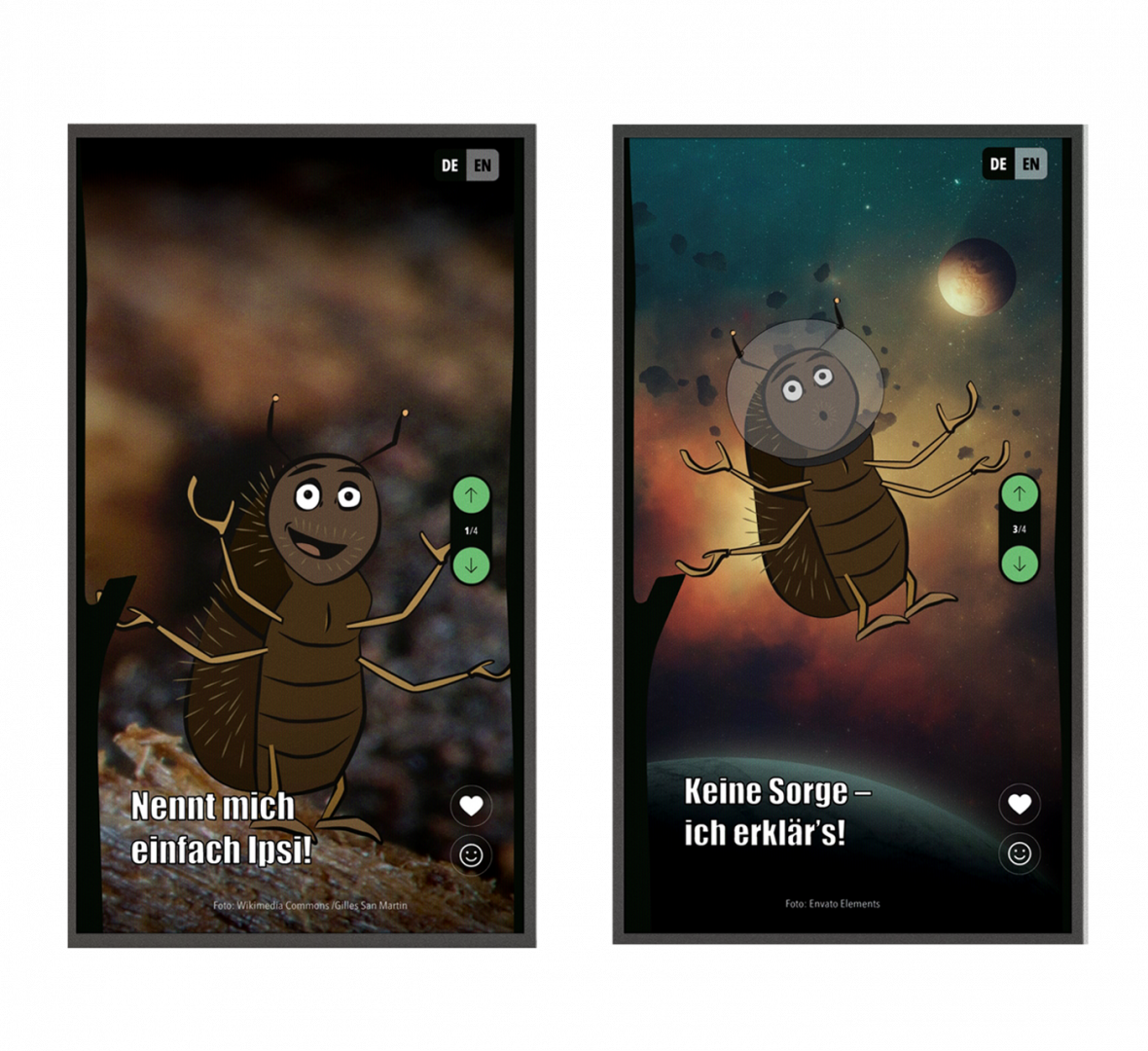
Learn more
We would be happy to advise you on the possibilities of digital knowledge transfer for your institution. Arrange a non-binding initial appointment now.
Touch installations and gamification introduce children and young people to the world of non-representational art. Six stations invite young visitors to get creative themselves and immerse themselves interactively in the design of abstract visual worlds. Here is an overview of the individual stations.
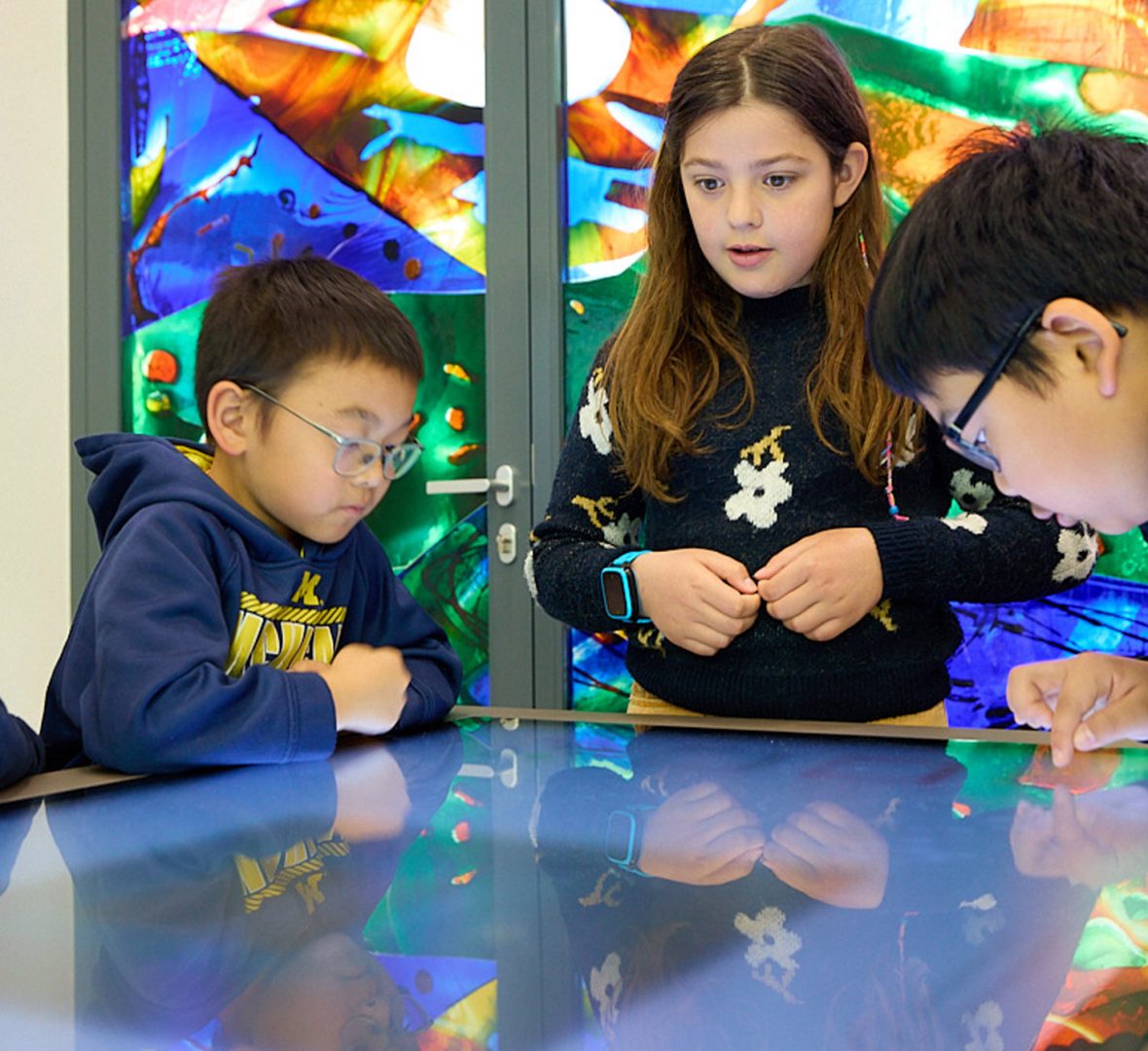
Game “Gesture”
Visitors can create color spots by touching the touchscreen. Full body use: The screen not only reacts to the index finger – it can also be painted with knees and elbows. The intensity of the color stain is directly proportional to the duration of the touch. Based on the color world of an original painting from the exhibition, a new work of art is created.
Game “Dance”
At this station, your own body becomes a paintbrush. Up to 4 visitors can create a picture simultaneously by means of dance and body movement. A motion-tracking camera is used to capture the body movement and translate it into an image.
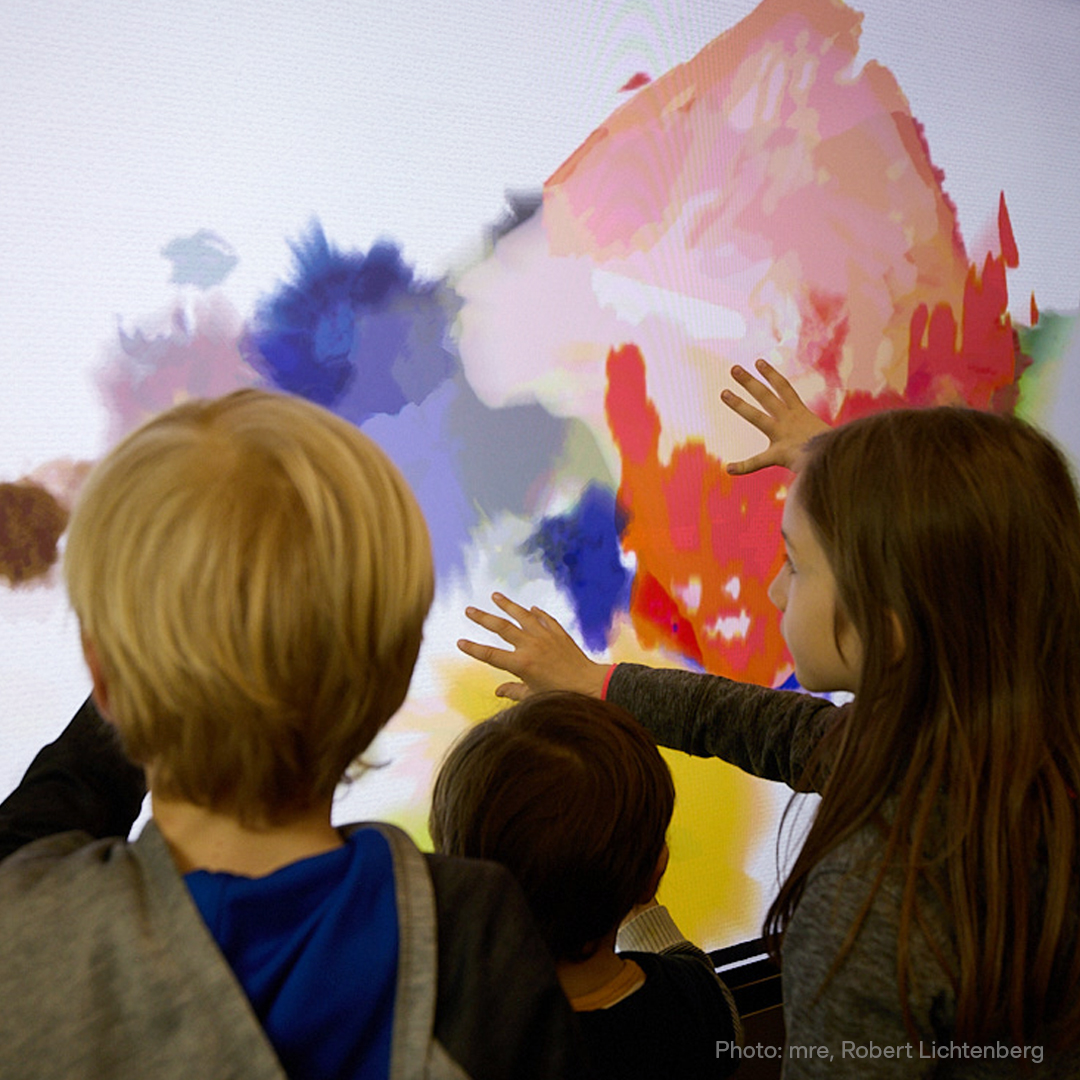
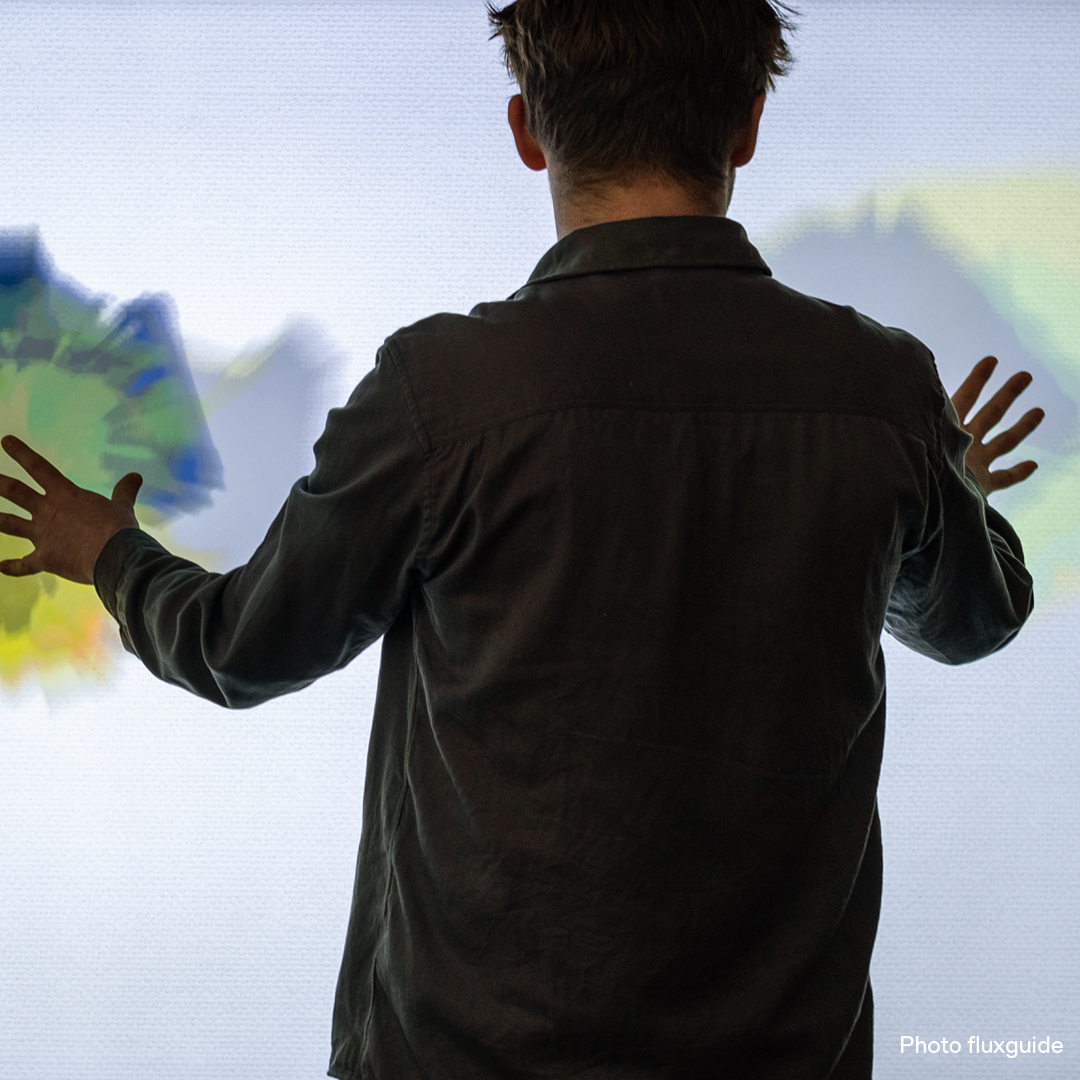
Game “Brushstroke”
A portrait photo taken in the exhibition space can be transformed at this station into various painting styles featured in the exhibition. In this way, the wide range of abstract art styles becomes visible through a selfie.
Game “Painter”
At this station, a portrait photo taken in the exhibition space can be transferred into different painting styles of the exhibition. The range of different painting styles of abstract art thus becomes visible by means of a selfie.
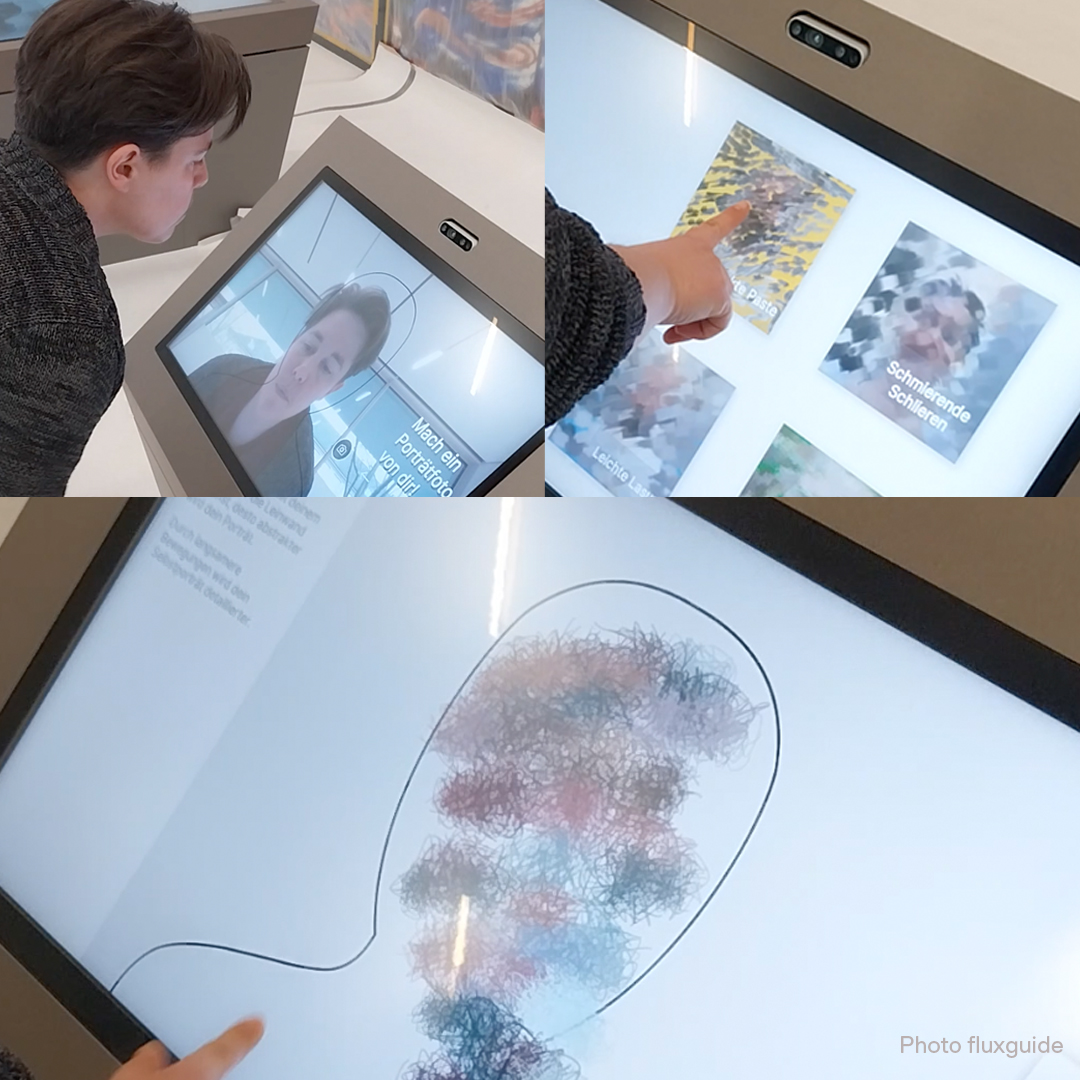
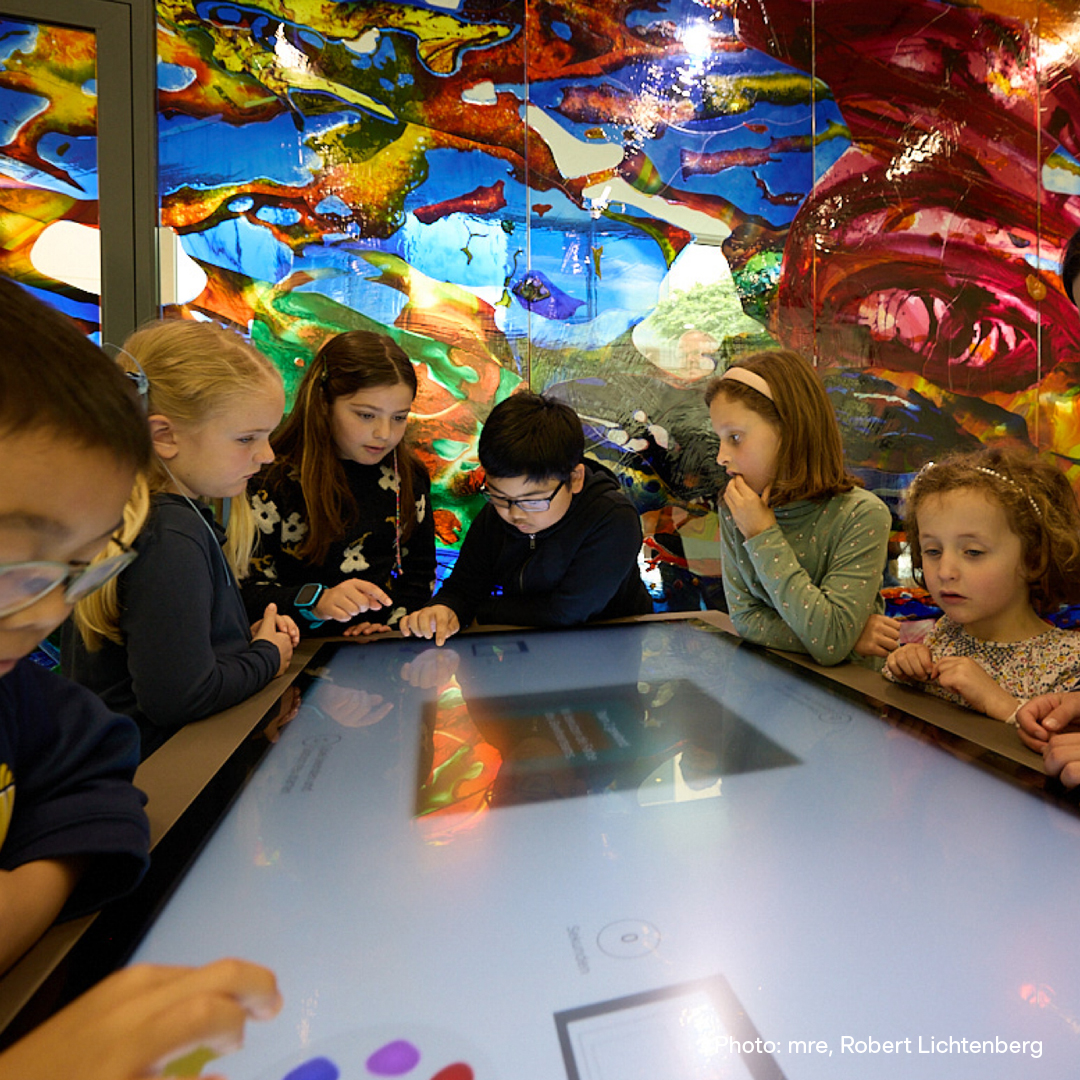
Game “Throwing colors”
This team game refers to the action paintings of the artist Shōzō Shimamoto, which can also be seen at the Museum Reinhard Ernst. Visitors create abstract art by digitally throwing bags of paint onto a canvas, just like the artist.
Game “See colors”
The color theory of Josef Albers can be experienced by young visitors at this station. The goal is to digitally mix colors and get as close as possible to the color code of an original painting from the exhibition.
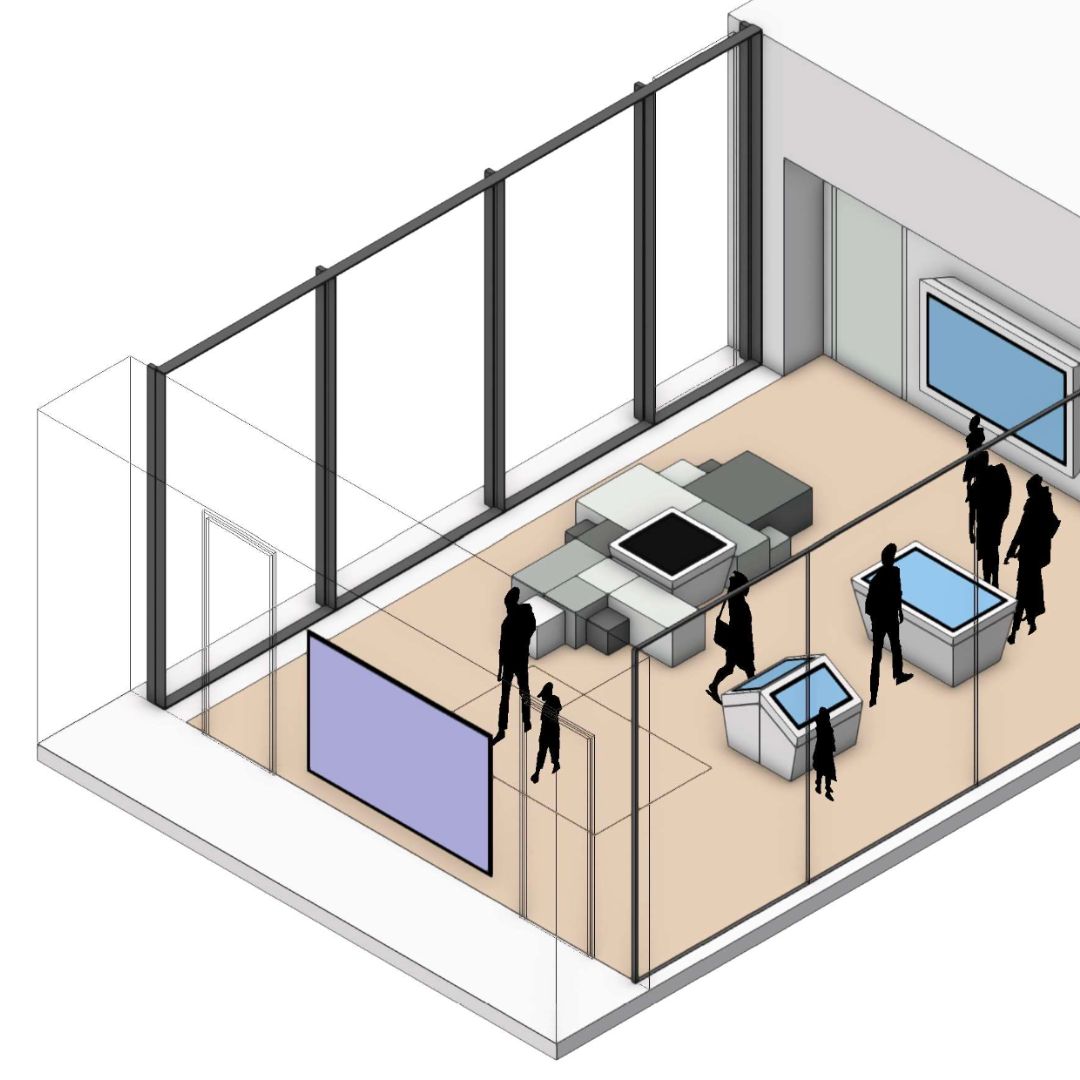
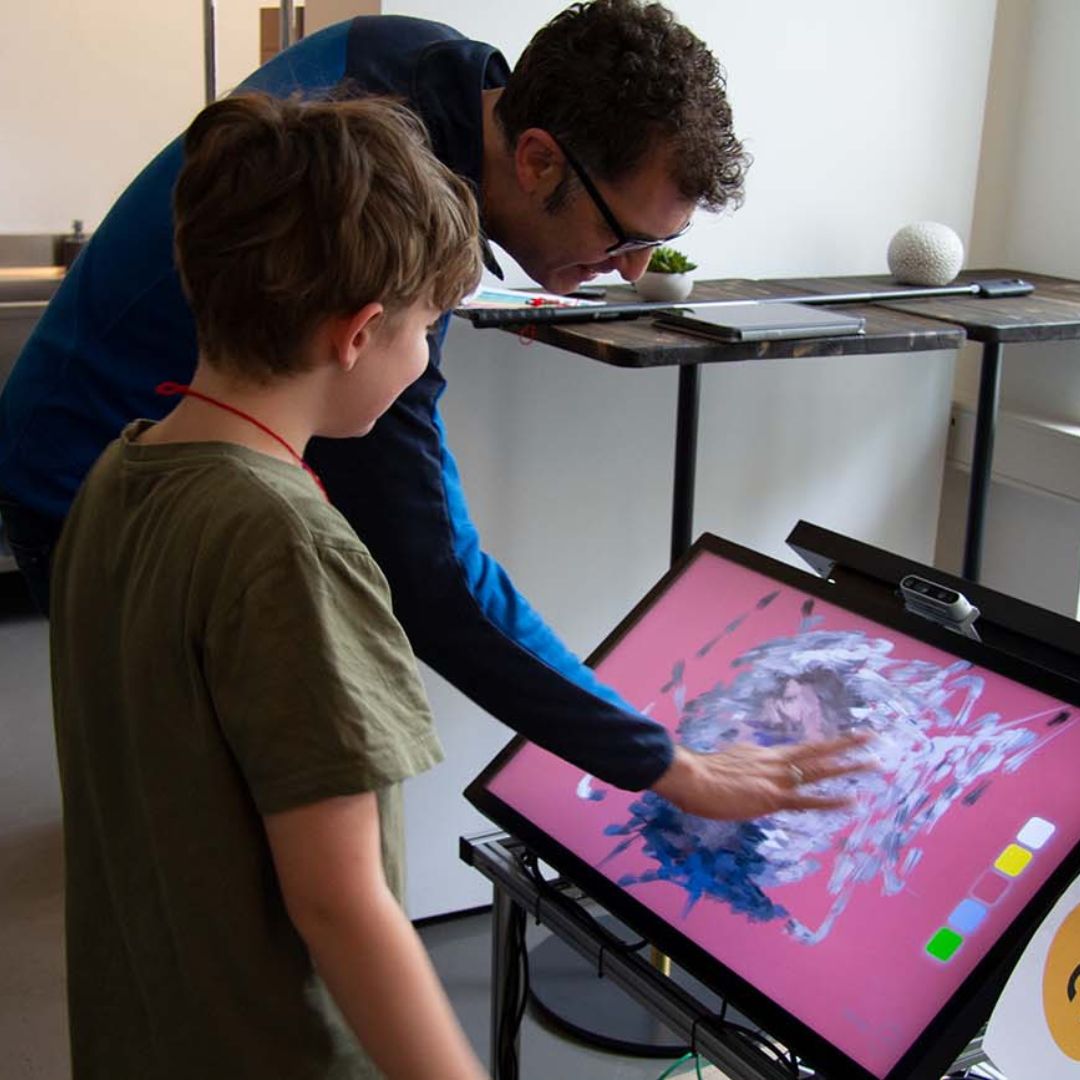
A new museum for abstract art
Making art tangible for everyone is the mediating approach of museum founder Reinhard Ernst and his wife Sonja. After around eight years of planning and construction, their new, architecturally impressive museum opened its doors to the public in summer 2024. One of the two art lovers’ main concerns is to promote children’s creativity, as Ernst repeatedly emphasises in interviews. He therefore sees the colour laboratory as the ‘heart of the new museum’. We are proud that we were able to make a major contribution to the success of this heartfelt project with the conception and realisation of the colour laboratory.
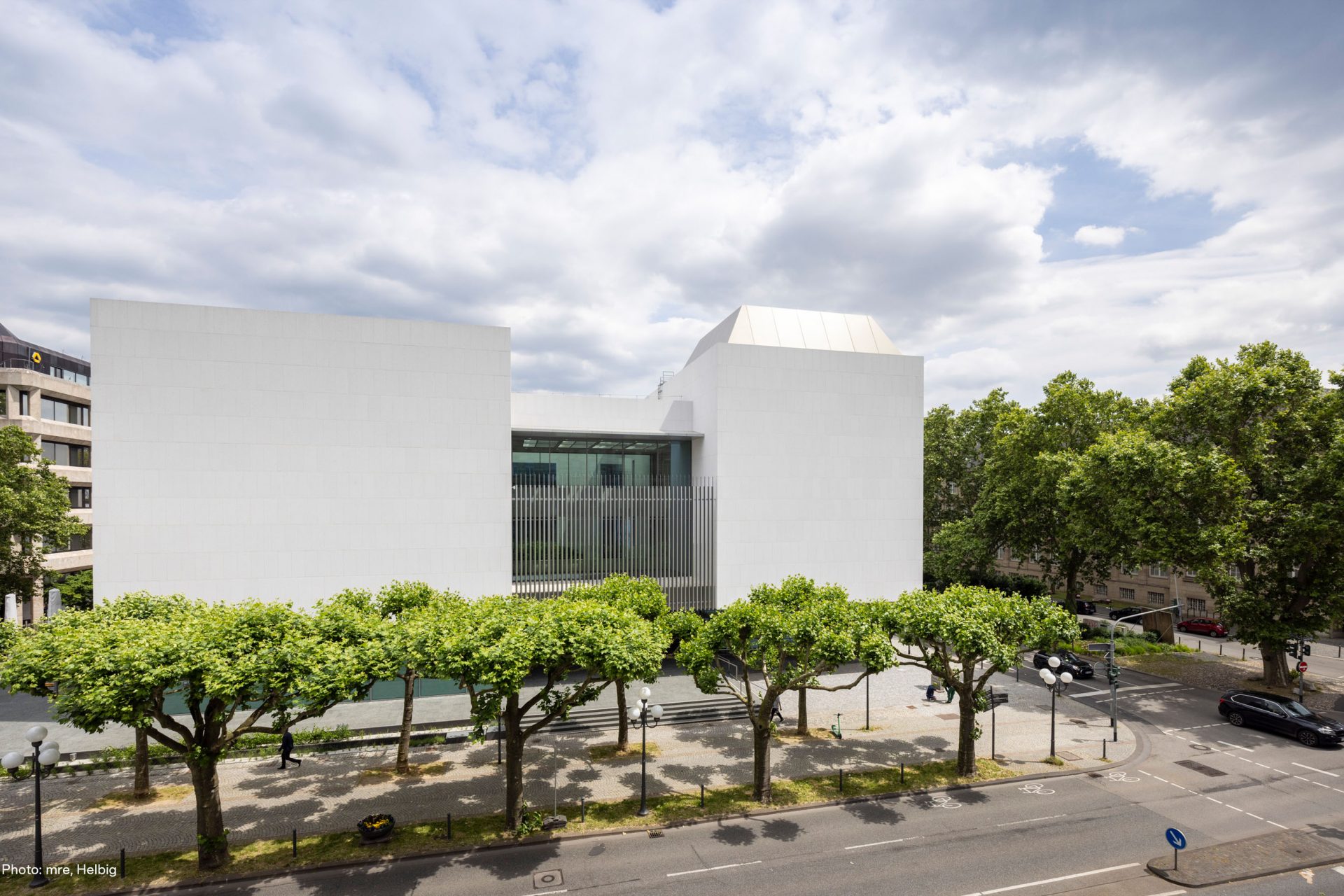
Erfahren Sie mehr
Wir beraten Sie gerne zu den Möglichkeiten der digitalen Wissensvermittlung via Touchscreen für Ihre Ausstellung. Vereinbaren Sie jetzt einen unverbindlichen Ersttermin.